Things You'll Need
Copper sheet
Pre-made copper shapes
Tin snips
Jeweler’s saw
Drill with drill bits
Metal files
60-grit sandpaper
Work gloves
Safety glasses
Liquid dish soap
Water
Alcohol
Paper towels
Artist’s paint brushes
Commercial patinating formula
Gesso
Liver of sulpher
Oven or toaster oven
Prismacolor pencils
Turpentine
Cotton swabs
Clear acrylic fixative
0000 steel wool
Renaissance Wax
Soft cloth
Buffing and polishing cloths

Coloring metal has presented a dilemma to artists for centuries. Until recently, chemical solutions were the only way to change the color of metal, and those colors were not bright. Now, with new materials, such as Prismacolor pencils, there are new fun and fascinating ways to brightly color your metals. Copper is one of the best metals to use for this project because, compared to silver and gold, it is inexpensive and looks especially good when enhanced with color.
How to Use Prismacolor on Copper
Step 1
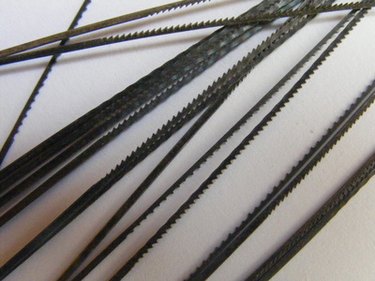
Decide what pieces you will need and cut the desired shapes from your copper stock using tin snips or a jeweler's saw. Consider working on the pre-made copper shapes available at hobby shops. File the edges of the final shapes and drill holes for connectors, rivets, bails or wires. Many artists make holes which will be used to rivet their copper piece to a more "skin-friendly" backing, such as silver.
Video of the Day
Step 2
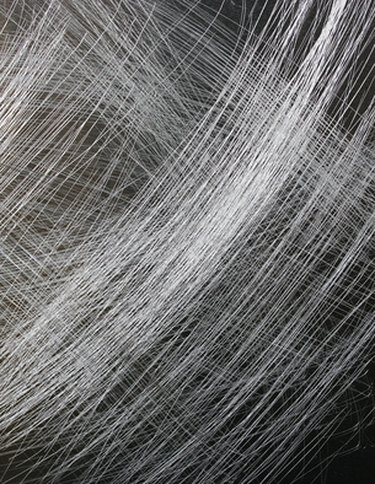
Roughen the surface of your raw copper shape with 60-grit sandpaper to make the patina, which will be applied later. The rougher the surface of the copper is, the better the patina will adhere. Wear gloves and safety glasses while cutting or abrading your copper.
Step 3
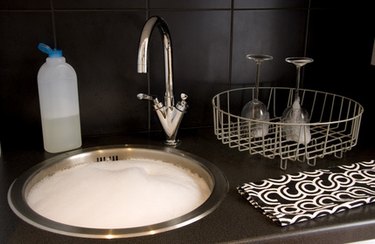
Wash the copper pieces thoroughly with liquid dish soap and water; degrease further using alcohol on a paper towel. The metal must be completely free of oil from your fingers for the patina to adhere to the copper. Apply oil with an artist's paintbrush in a deliberate pattern if you wish to have copper showing through the final colors
Step 4
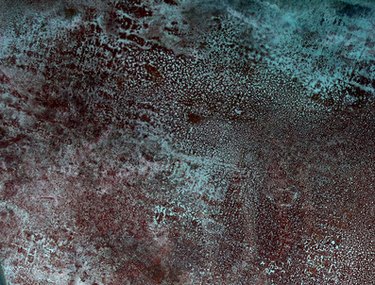
Patina your copper pieces by painting on a commercial patinating formula, gesso, or liver of sulphur. Warm your copper pieces in a toaster oven before using liver of sulphur, let sit until desired patina is obtained, and rinse well. Debra Weld, who is a pioneer in this technique, suggests using JAX Green Patina for Copper because it leaves a rougher surface than other products. Let the patina sit for 24 hours before coloring your work.
Step 5
Color your patinated copper with Prismacolor pencils, which have a higher wax content than other colored pencils. Use a thin coat of the lighter colors first then move up to your darker colors. Swab your work with turpentine to smudge the color. Work the color into your piece with an artist's paint brush and the turpentine. Be sure to clean your brush between colors, unless mixing colors is your goal, which can give a beautiful effect.
Step 6
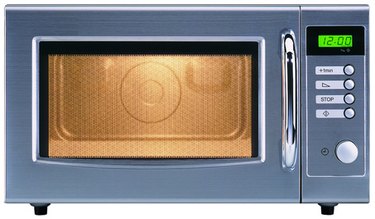
Bake the pieces for about 10 minutes at 275 degrees.
Step 7
Spray the pieces with clear acrylic fixative. Then sand lightly with 0000 steel wool.
Step 8
Add more color and turpentine, then bake and spray again until you achieve your desired color or until the copper will not take any more layers of wax.
Step 9
Seal the color with Renaissance Wax and bake it for another 10 minutes.
Step 10
Use a soft cloth to remove any residue. Then buff and polish your pieces to finish them.
Tip
A toaster oven is best for this project, although a larger oven will work. A toaster oven dedicated to crafting is ideal.
It can take practice to get good results.
Warning
Work in a well-ventilated area. Turpentine and Renaissance Wax can be toxic.
Video of the Day